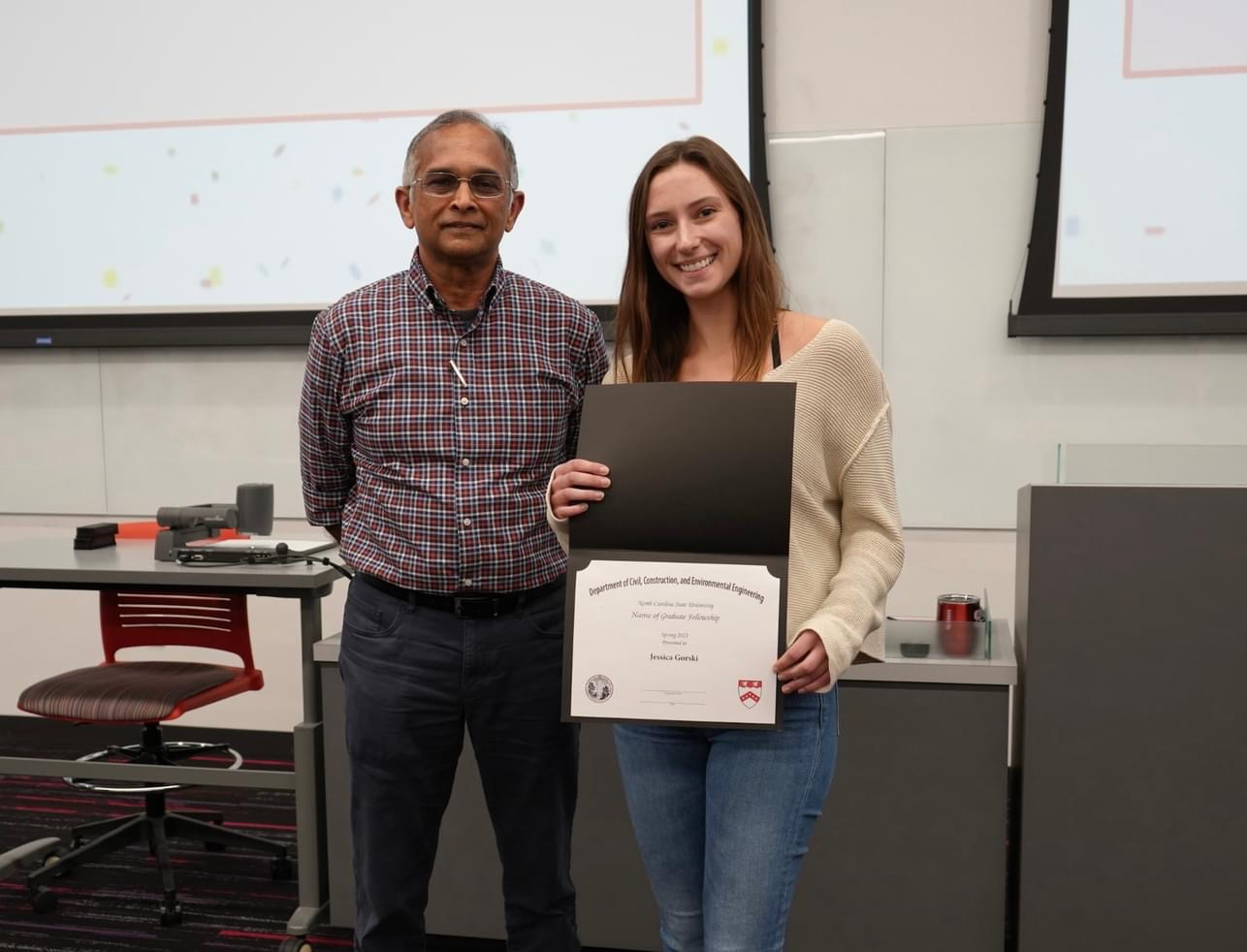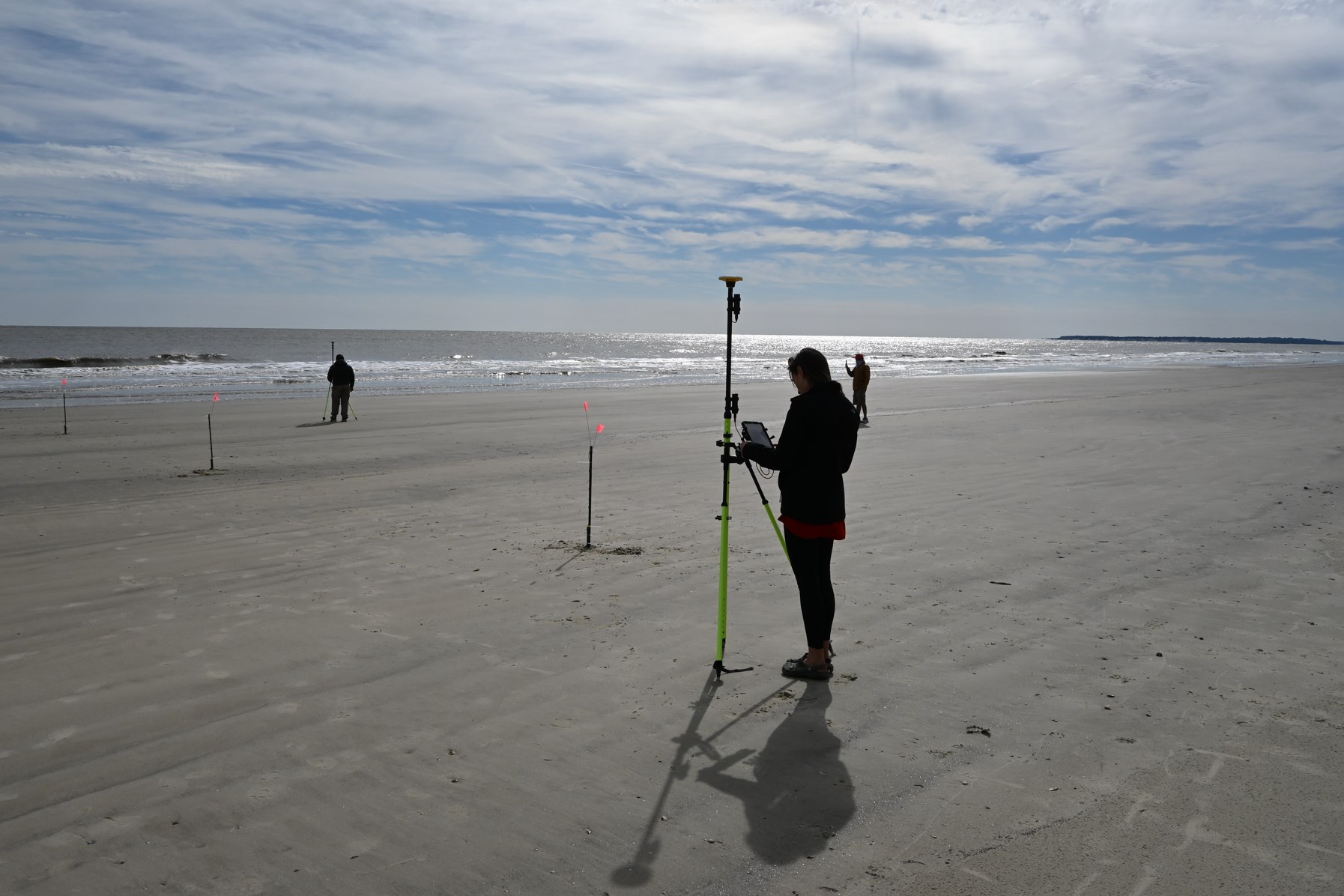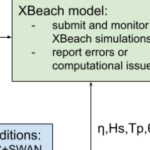 In this study, we apply the state-of-art model eXtreme Beach (XBeach) to predict coastal erosion due to Hurricanes Michael (2018) and Ian (2022). Sandy beaches along the U.S. Atlantic and Gulf coasts are represented with thousands of one-dimensional transects, which are sampled for real-time forecasts based on the storms’ tracks and projected landfall locations. The morphodynamic model is initialized with high-resolution digital elevation models of the present-day conditions and forced with hydrodynamics from high-resolution wave and circulation models, and its predictions are categorized based on impacts to the primary dune. A key contribution of this study is the semi-automation of the modeling system, so the modeling framework can be applied to different regions of the coast as the landfall location shifts.
In this study, we apply the state-of-art model eXtreme Beach (XBeach) to predict coastal erosion due to Hurricanes Michael (2018) and Ian (2022). Sandy beaches along the U.S. Atlantic and Gulf coasts are represented with thousands of one-dimensional transects, which are sampled for real-time forecasts based on the storms’ tracks and projected landfall locations. The morphodynamic model is initialized with high-resolution digital elevation models of the present-day conditions and forced with hydrodynamics from high-resolution wave and circulation models, and its predictions are categorized based on impacts to the primary dune. A key contribution of this study is the semi-automation of the modeling system, so the modeling framework can be applied to different regions of the coast as the landfall location shifts.
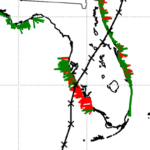 To demonstrate this, forecasts for Ian (2022) were initiated several days before the initial landfall location in Punta Gorda, Florida, and continued as the track made a secondary landfall near Georgetown, South Carolina. About 1800 transects are selected for each of the 25 advisories. The simulations are monitored, evaluated, and visualized to communicate the XBeach predictions of coastal change. The framework produces results in less than an hour and then publishes visualizations in less than 10 minutes. Results are compared spatially and temporally to qualitative post-Ian observations and total water level predictions. XBeach can predict dune impact compared to an established coastal change forecasting model while providing additional morphodynamic information not typically available, such as timing and magnitude of volume change. The addition of fully resolved ground surface information and morphodynamics in the model makes it possible to better understand the storm evolution and how that translates into erosion of beaches and dunes.
To demonstrate this, forecasts for Ian (2022) were initiated several days before the initial landfall location in Punta Gorda, Florida, and continued as the track made a secondary landfall near Georgetown, South Carolina. About 1800 transects are selected for each of the 25 advisories. The simulations are monitored, evaluated, and visualized to communicate the XBeach predictions of coastal change. The framework produces results in less than an hour and then publishes visualizations in less than 10 minutes. Results are compared spatially and temporally to qualitative post-Ian observations and total water level predictions. XBeach can predict dune impact compared to an established coastal change forecasting model while providing additional morphodynamic information not typically available, such as timing and magnitude of volume change. The addition of fully resolved ground surface information and morphodynamics in the model makes it possible to better understand the storm evolution and how that translates into erosion of beaches and dunes.


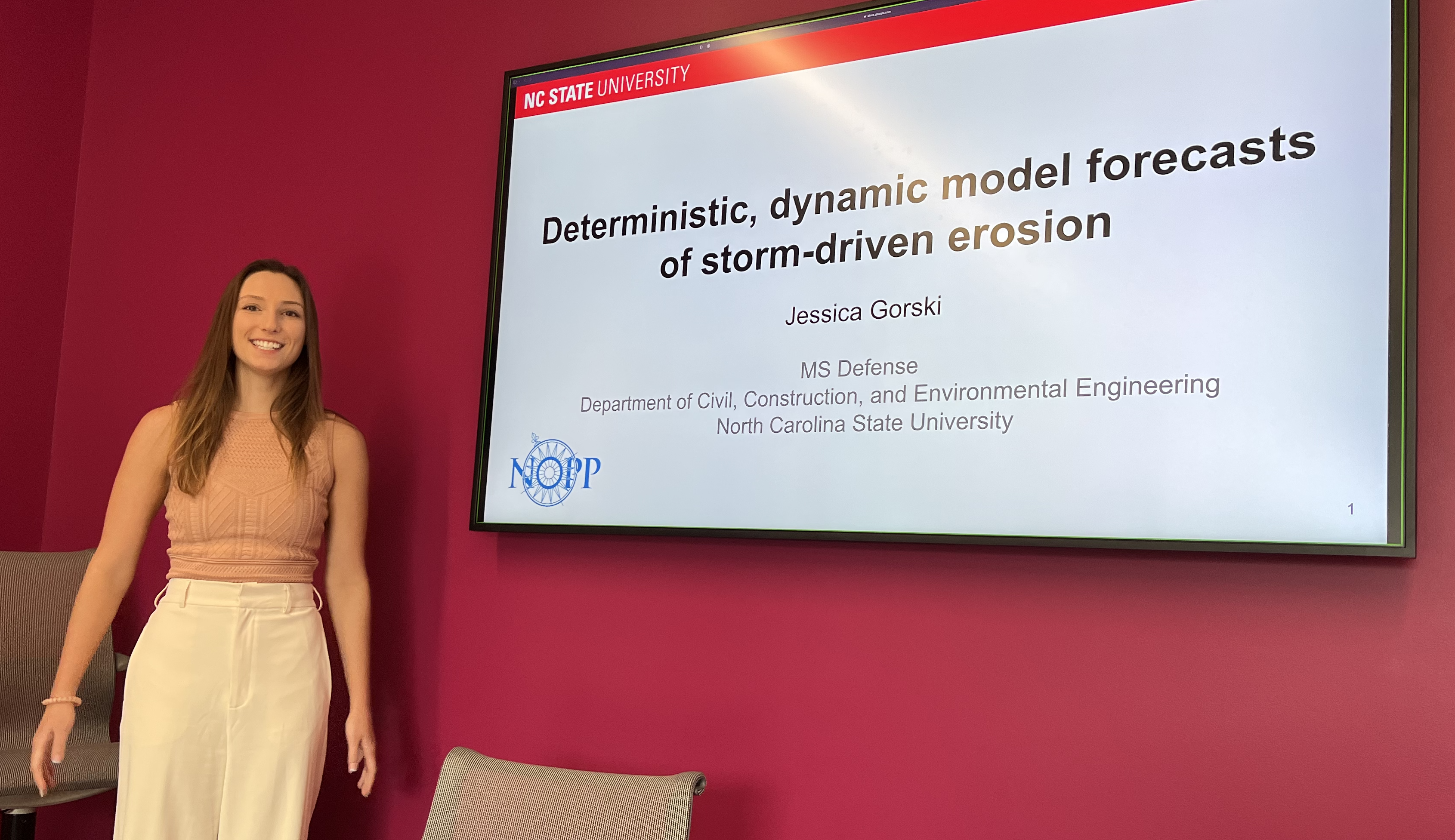
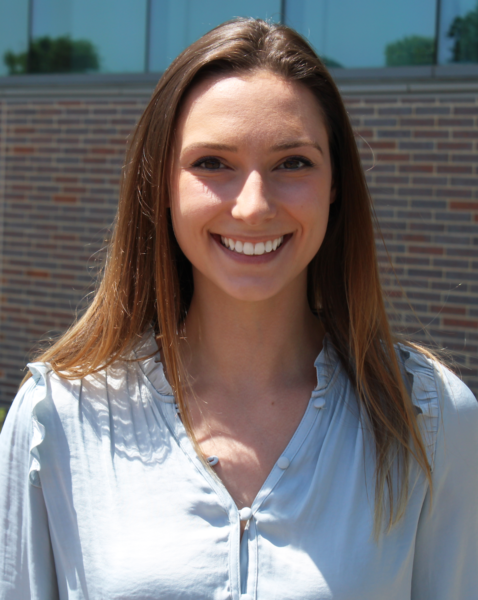 M.S. student Jessica Gorski was recognized as the Masters Scholar of the Year for Research by the NCSU College of Engineering (CoE). Students were nominated by departments within the CoE, and Jessica was selected for this award to recognize outstanding scholarly achievement and dedication to the NC State community and beyond. The award includes a cash stipend.
M.S. student Jessica Gorski was recognized as the Masters Scholar of the Year for Research by the NCSU College of Engineering (CoE). Students were nominated by departments within the CoE, and Jessica was selected for this award to recognize outstanding scholarly achievement and dedication to the NC State community and beyond. The award includes a cash stipend.
